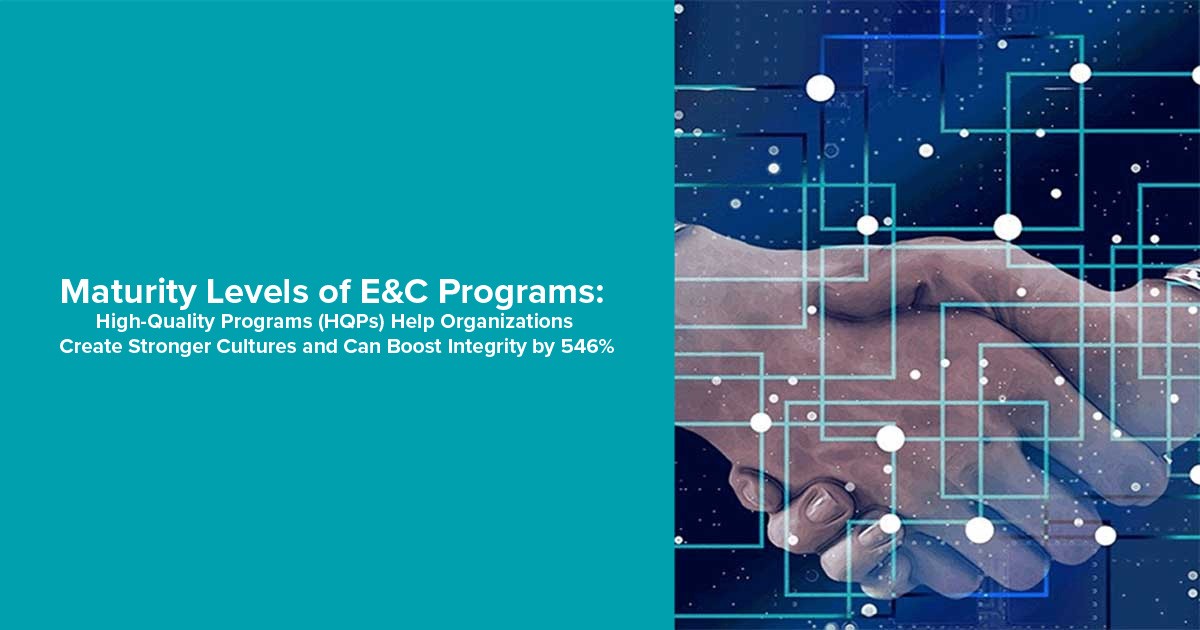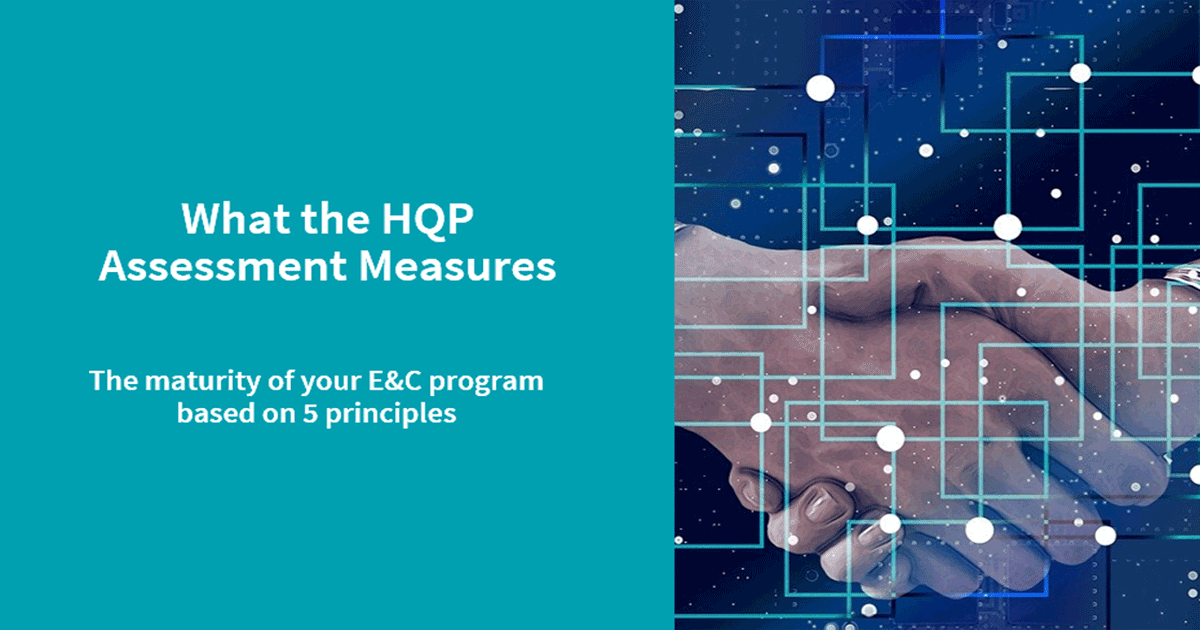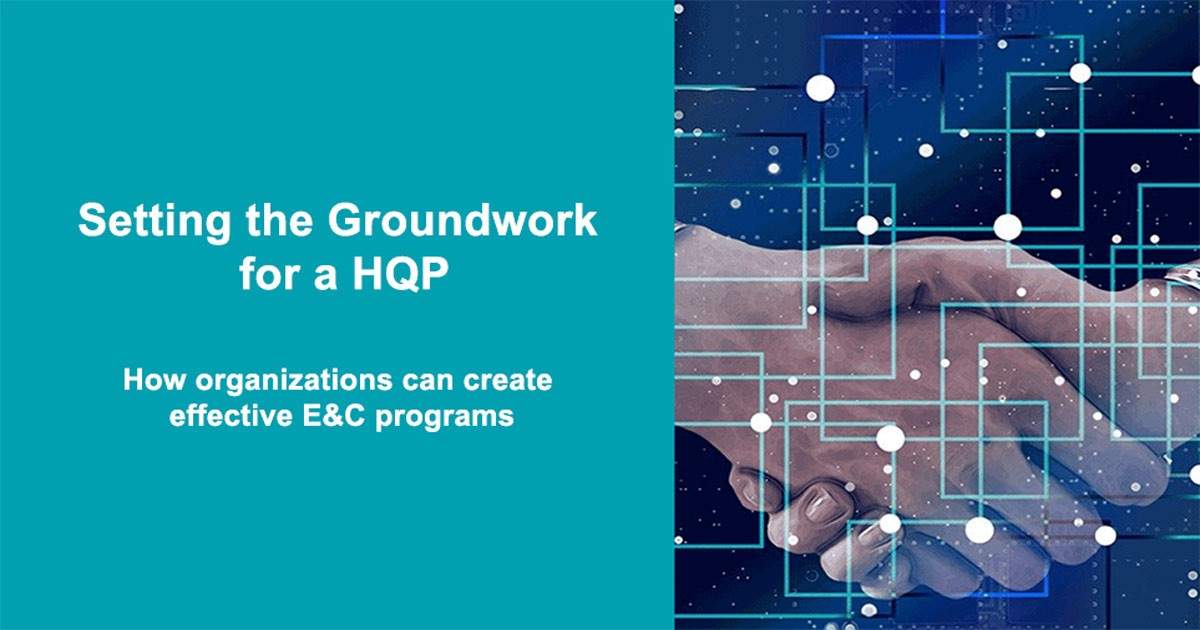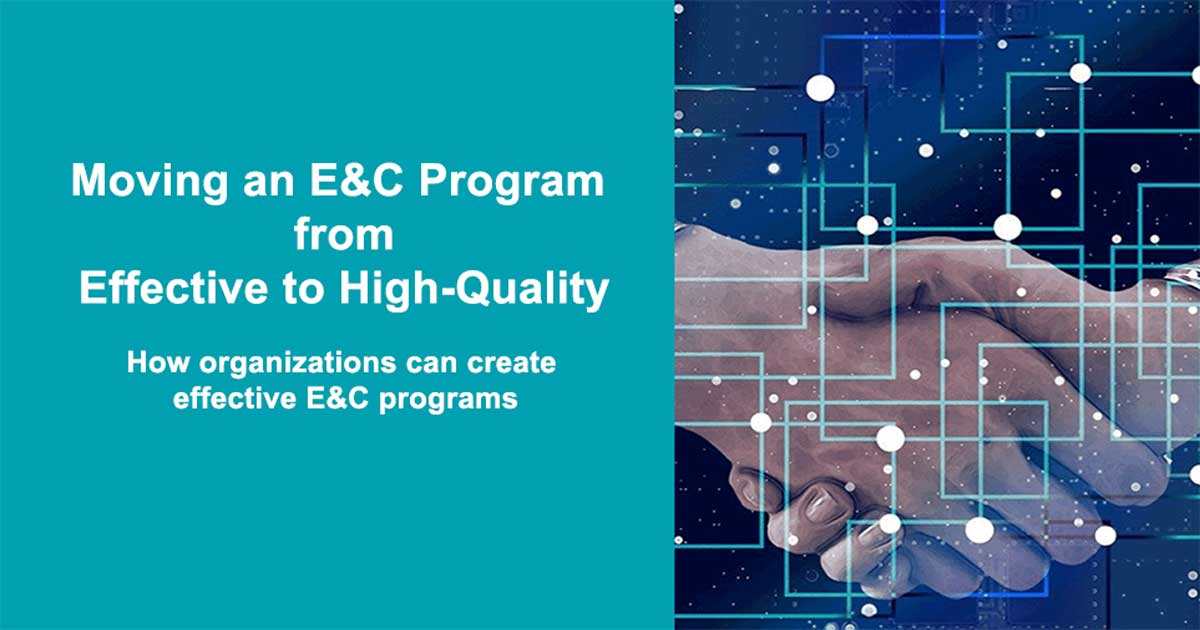Maturity Levels of E&C Programs: High-Quality Programs (HQPs) Help Organizations Create Stronger Cultures and Can Boost Integrity by 546%
In our previous posts about high-quality ethics & compliance programs (HQPs), we explored in detail how the Department of Justice evaluates corporate compliance programs, as well as the groundwork for creating HQPs that go beyond minimum standards and the five core principles that are shared by these organizations. In this post, we look at how HQPs are measured.. We also outline tangible benefits an organization receives when it has an HQP and strong ethics culture in place.
Organizations with effective ethics and compliance (E&C) programs have stronger workplace cultures, and that strength significantly decreases the likelihood of misconduct in the organization. As we have outlined in previous posts, effective E&C programs have distinct features, including holding employees accountable for misconduct and taking the time for management to share information on what is going on in the organization, among others. An effective program is important (and better than no program at all), so ECI has created a new program to help expand access to tools that will help organizations better understand the state of their E&C programs and move toward a high-quality program (HQP). With the new HQP Partner Program, organizations that serve E&C or related functions can offer tailored tools to their members and customers. With these tools, their customers can create HQPs that have been shown to boost organizational integrity by as much as 546 percent!
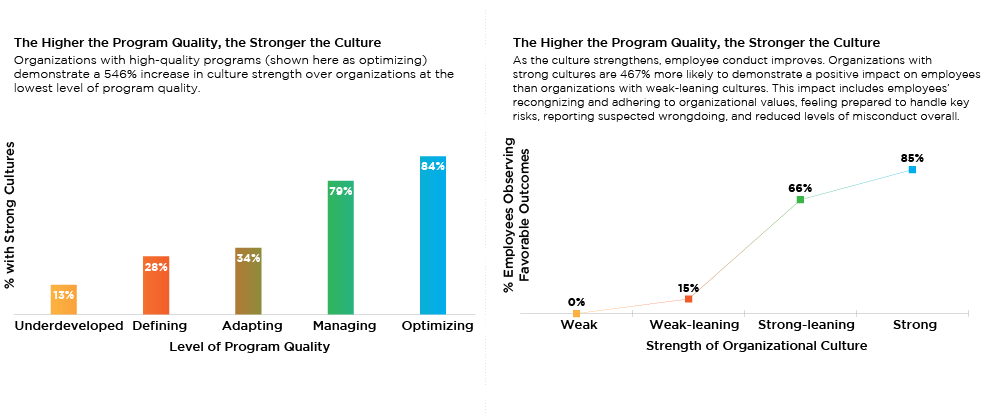
There are five levels or categories of maturity of an E&C program. According to HQP Measurement Framework, Underdeveloped is the least mature level, Managing would be considered an effective program, and the final category — Optimizing — includes the most elements of an HQP. These levels affect the strength of an organization’s culture and its progression to an HQP:
- Underdeveloped: A new E&C program or an existing one that has not progressed far in embedding HQP elements. A formal risk assessment program is not fully established or does not yet exist.
- Defining: An E&C program that contains a number of HQP elements reflecting some important attributes, but with room to further mature. A formal risk assessment structure is established and operating in a few departments or functions, but operates tactically.
- Adapting: An E&C program that has a few HQP elements, but still lacks many important attributes. A formal risk assessment process is in place with accountability assigned for ethics and compliance risk management, but is not consistently performed.
- Managing: An E&C program that can be considered effective or good, but not an HQP. A formal risk assessment process is developed and embedded as an integral part of business processes.
- Optimizing: An E&C program that contains the majority of, if not all, HQP elements. Risk assessment follows best practices and includes all aspects of a leading risk management program.
In the ECI’s examination of the impact of E&C programs based on their level of maturity, two primary findings emerged that build the case for continually improving E&C practices and policies:
- The higher the program quality, the stronger the ethics culture is.
- 85% of employees working for organizations with a strong ethics culture indicated observing favorable outcomes, while
- 0% of employees working for organizations with a weak ethics culture indicated observing favorable outcomes.
- The stronger the culture, the greater the impact:
- 84% of employees working for organizations with an E&C program performing at the “optimizing” level perceived their organization as having a strong ethics culture, while
- 13% of employees working for organizations with an “underdeveloped” E&C program perceived their organization as having a strong ethics culture.
In addition, employees in organizations with HQPs and a strong ethics culture experience a decreased risk for E&C violations, because the environment in which they work is characterized by:
- Less pressure to compromise ethics standards;
- Less observed misconduct;
- More reporting of misconduct observed; and
- Less retaliation for reporting.
ECI research consistently demonstrates that when employees experience pressure to compromise their organization’s workplace ethics standards, there are higher incidences of misconduct, lower reporting of the same and higher rates of retaliation.
On the other hand, when organizations are committed to ethical leadership, shared values and building an ethics-focused business culture, the organizations are more likely to have strong ethics health.
In which type of organization would you prefer to work?
Don’t have an E&C Program or have a limited one?
The time is now to make E&C a priority. ECI offers a free “tool kit” at www.ethics.org to help you begin to formalize your E&C program.
Have an E&C Program in Place, but want to move it to the next level?
Do not take your established efforts for granted. Assess your culture and provide additional support to your business areas where employees perceive it to be weak. Reinforce the importance of culture among managers. Read more about E&C program measurement here and learn more about NAVEX Global, our first participant in HQP Partner Program.
Details regarding ECI’s High-Quality Program (HQP) principles, the HQP Measurement Framework and our blue-ribbon panel report, Principles & Practices of High-Quality Ethics & Compliance Programs, are available to the public at www.ethics.org/HQP.
Other Posts in the HQP series

